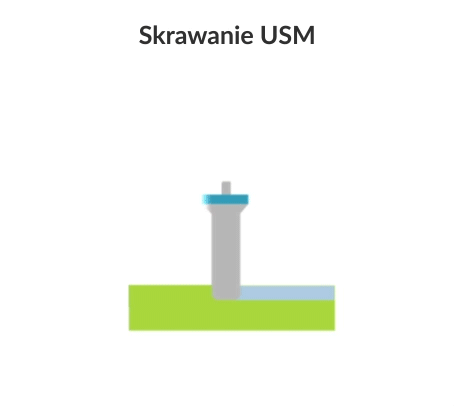Ultrasonic machining is a subtractive manufacturing process for hard and brittle materials in which the main mechanism of disruption of workpiece material cohesion is micro-crushing.
During USM machining the cutting tool, in addition to the conventional working motions (primary and feed motion), performs a vibrational movement at ultrasonic frequency, usually in a direction perpendicular to the surface being machined. The USM process uses elastic mechanical vibrations of the tool with frequencies in the range of 16-50 kHz, induced by an acoustic system equipped with an ultrasonic generator.
There are the following variations of USM machining:
- USM-EDM machining – the tool vibrates at an ultrasonic frequency, striking the workpiece surface with very fine grains of abrasive powder suspended in the gap between the tool face and the workpiece.
- ultrasonic grinding – involves the subtractive manufacturing of products using a grinding wheel that simultaneously rotates and vibrates at an ultrasonic frequency.
- ultrasonic milling – involves the subtractive manufacturing of products using a milling cutter that simultaneously rotates and vibrates at an ultrasonic frequency.

